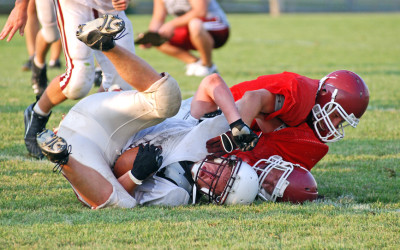It is common in our practice to observe athlete’s who suffer from balance and coordination deficits following a concussion. These deficits may remain well beyond when an athlete is approved for participation is their sport. I read an article recently in Medicine & Science in Sports & Exercise that explored the frequency of leg injuries in athletes up to a year after having suffered a concussion. The authors hypothesized that many athletes were cleared to return to sport before their balance and coordination symptoms had fully resolved, and were therefore at a greater risk of injury while playing. In their study, the authors compared injury rates before and up to a year following a concussion with matched athletes who had not been concussed. The study found athletes were about two times more likely to injure their leg up to one year following a concussion. They also found athletes were about one and a half times more likely to suffer a leg injury following a concussion than athletes in the same sports who had not been concussed. The authors concluded that more attention needs to be paid to athletes’ dynamic balance and movement patterns prior to return to sports to minimize the risk of a new injury.
I use a variety of techniques in my practice to test, rehabilitate, and safely return concussed athletes to sport. At Freedom, we use a force platform system to test and retest all of our post concussion patients for balance deficits. This system allows us to track patient’s progress and adjust therapy accordingly, as well as compare their score to uninjured peers. We are able to challenge balance in a safe environment using a computer and force plate to pick up even the slightest deviation. We use this information to modify a patient’s exercises to specifically address their deficit and to confidently return an athlete to their sport.
Another tool I use in practice is the Selective Functional Movement Assessment (SFMA). This helps me determine athletes’ movement patterns and potential deficits. The SFMA is designed to break down sources of movement errors that contribute to pain or dysfunction. This allows me to customize a treatment plan based on an athlete’s specific movement deficits and better prepare them to return to their sport. Often athletes will find that they are able to perform better post injury than they were prior to receiving therapy!
Have you or one of your family members suffered from a concussion injury? If so, you may not have fully recovered and may be at risk for injury in your sport. It may benefit you to seek out an evaluation and find out if therapy will lower your injury risk and maximize your performance.

